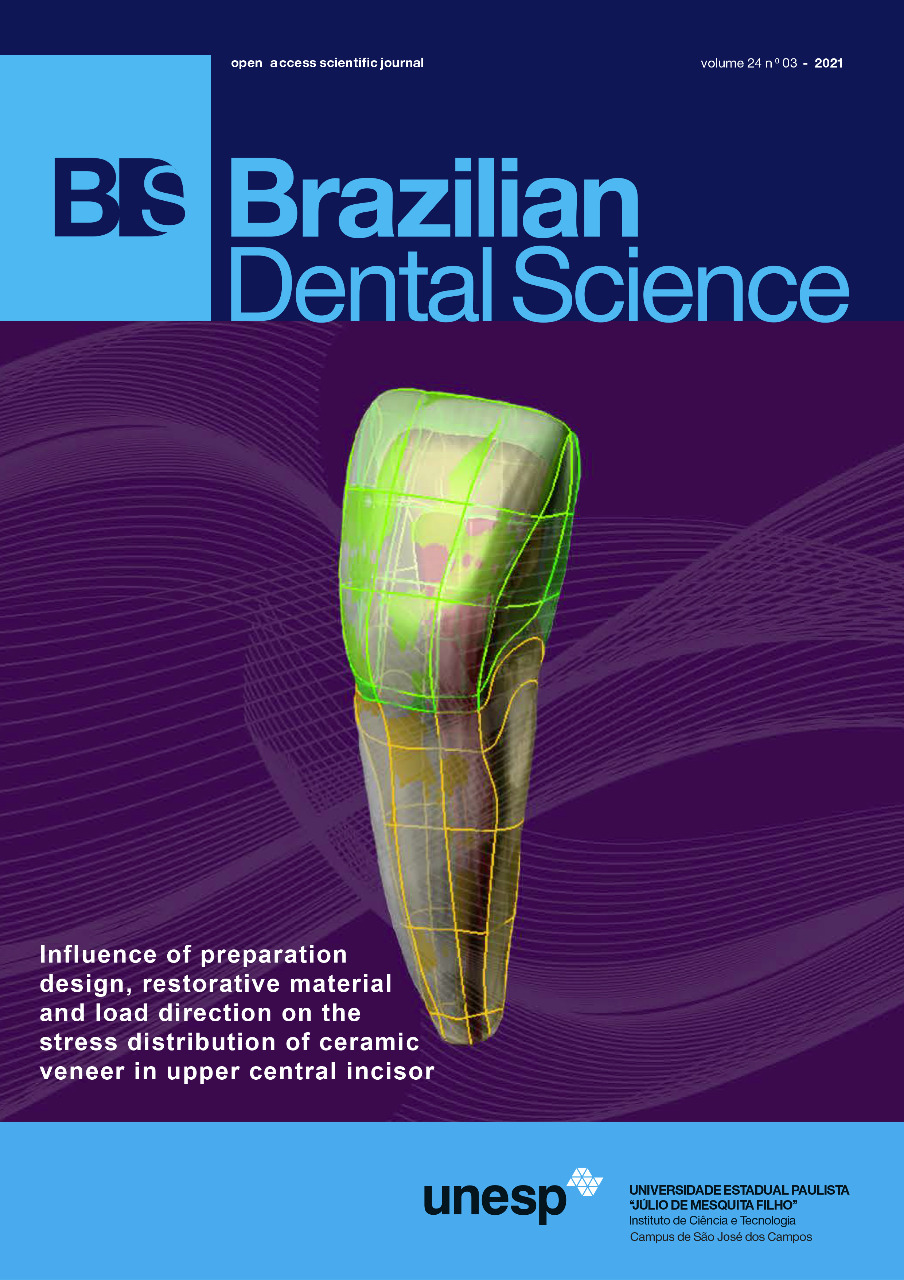The The ability of platelet-rich plasma to regenerate a non-vital immature permanent teeth
DOI:
https://doi.org/10.14295/bds.2021.v24i3.2576Abstract
Objectives: To test the ability of platelet-rich plasma clinically and radiologically for pulp regeneration of immature teeth with apical periodontitis. Material and Methods: An experimental study was conducted From (March/2018-July/2020) 12 upper central immature incisors with acute apical periodontitis and necrotic pulp from six patients receiving regenerative endodontic treatment using concentrated platelets rich plasma were performed by the same endodontist at Mediclinic Middle East Hospitals. Informed consent, including explanation of risks and alternative treatments or no treatment were prepared and filled by the patient parents. The therapeutic protocol was involved accessing the pulp chamber; irrigation copiously with sodium hypochlorite; applying calcium hydroxide as intracanal medicament and a provisionally sealing it after 4 weeks. The canal was cleaned, dried and injected with concentrated platelets rich plasma which serve as a scaffold for pulp regeneration. MTA was used to seal the chamber before final filling with composite. Evaluations: All teeth were monitored clinically (mobility, palpation, percussion, and sensitivity cold test) and radiographically. Results: Twenty months follow-up all teeth showed resolution of periapical radiolucencies, continued root development with positive response to sensitivity cold test and no discoloration. Conclusion: The results of this study confirmed the previous finding that pulp regeneration can be gained by using cPRP successfully
Keywords
Immature teeth; Necrosis; cPRP; Regeneration.
Downloads
Downloads
Published
How to Cite
Issue
Section
License
Brazilian Dental Science uses the Creative Commons (CC-BY 4.0) license, thus preserving the integrity of articles in an open access environment. The journal allows the author to retain publishing rights without restrictions.
=================




























